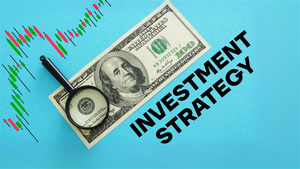
Palomar Holdings’ second quarter results surpassed Wall Street expectations for both revenue and non-GAAP earnings, yet the market responded negatively. Management pointed to robust growth in specialty insurance lines, particularly residential earthquake, inland marine, and casualty, as key contributors to the quarter’s performance. CEO Mac Armstrong emphasized that the company’s balanced portfolio and disciplined underwriting allowed it to navigate increased competition and pricing pressure in large commercial earthquake accounts, while residential segments continued to gain traction. Armstrong also noted that new product launches and the expansion of underwriting talent helped drive strong premium growth, while a conservative approach to reserving maintained stability despite shifts in loss ratios. The negative market reaction suggests investor concerns about future growth rates or margin sustainability as some commercial lines face rate declines.
Is now the time to buy PLMR? Find out in our full research report (it’s free).
Palomar Holdings (PLMR) Q2 CY2025 Highlights:
- Revenue: $203.3 million vs analyst estimates of $186.1 million (55.1% year-on-year growth, 9.2% beat)
- Adjusted EPS: $1.76 vs analyst estimates of $1.68 (4.5% beat)
- Adjusted Operating Income: $59.88 million (29.5% margin, 79.4% year-on-year growth)
- Operating Margin: 29.5%, up from 25.5% in the same quarter last year
- Market Capitalization: $3.30 billion
While we enjoy listening to the management's commentary, our favorite part of earnings calls are the analyst questions. Those are unscripted and can often highlight topics that management teams would rather avoid or topics where the answer is complicated. Here is what has caught our attention.
Our Top 5 Analyst Questions From Palomar Holdings’s Q2 Earnings Call
- Jon Paul Newsome (Piper Sandler) asked about the impact of competition and pricing declines in commercial earthquake. CEO Mac Armstrong responded that while commercial rate pressure exists, residential earthquake growth and balance across admitted/E&S lines position Palomar for continued expansion.
- Peter B. Knudsen (Evercore) questioned the drivers behind the elevated loss ratio and potential mix effects. CFO Chris Uchida explained that earlier crop premium recognition led to higher second-quarter losses, but expects favorability in later quarters as losses normalize.
- Mark Douglas Hughes (Truist Securities) pressed on the rationale for guidance increases relative to favorable reserve development. Armstrong clarified that guidance remains conservative, with crop seasonality and catastrophe load fully factored in, and does not assume further reserve releases.
- Meyer Shields (KBW) sought details on crop profitability and the effects of early premium booking. Uchida noted that while timing affects quarterly results, full-year expectations for crop remain unchanged, with final profitability determined after the harvest season.
- Pablo Augusto Serrano Singzon (JPMorgan) asked how changes in reinsurance retentions and product mix affect underwriting income. Armstrong and Uchida explained that leverage is greater in mature property lines, while casualty’s contribution will increase as the book seasons and risk participation grows.
Catalysts in Upcoming Quarters
In upcoming quarters, the StockStory analyst team will be watching (1) the pace and sustainability of residential earthquake and inland marine growth, (2) evidence of margin stability as commercial property competition persists, and (3) progress in scaling new specialty lines like crop, surety, and flood. The successful integration of recent partnerships and the impact of reinsurance renewals on risk-adjusted returns will also be key signposts for tracking Palomar’s execution against its strategic plan.
Palomar Holdings currently trades at $123.05, down from $131.89 just before the earnings. At this price, is it a buy or sell? Find out in our full research report (it’s free).
The Best Stocks for High-Quality Investors
Donald Trump’s April 2025 "Liberation Day" tariffs sent markets into a tailspin, but stocks have since rebounded strongly, proving that knee-jerk reactions often create the best buying opportunities.
The smart money is already positioning for the next leg up. Don’t miss out on the recovery - check out our Top 5 Strong Momentum Stocks for this week. This is a curated list of our High Quality stocks that have generated a market-beating return of 183% over the last five years (as of March 31st 2025).
Stocks that made our list in 2020 include now familiar names such as Nvidia (+1,545% between March 2020 and March 2025) as well as under-the-radar businesses like the once-micro-cap company Tecnoglass (+1,754% five-year return). Find your next big winner with StockStory today.
StockStory is growing and hiring equity analyst and marketing roles. Are you a 0 to 1 builder passionate about the markets and AI? See the open roles here.





